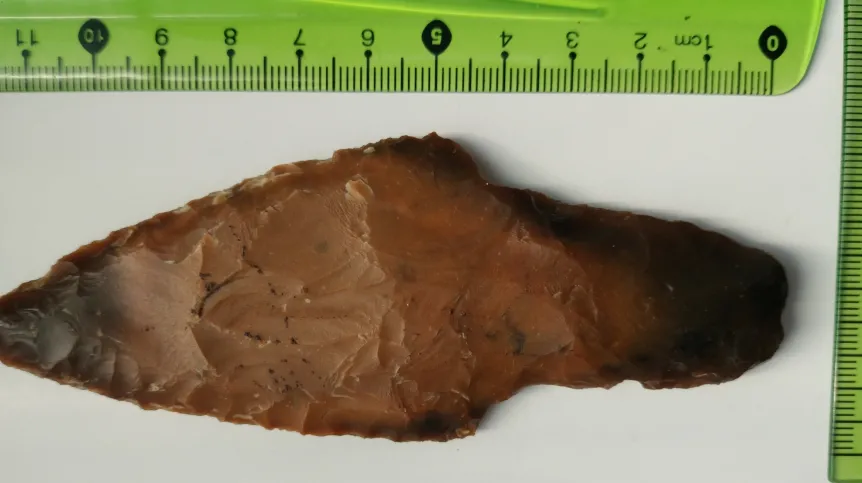
A farmer ploughing his field has stumbled upon the fragment of a large flint axe and a javelin head dating back thousands of years.
Jarosław Lipiec had been working on his land in the Potok Górny commune (Lublin province) when he came across the unearthed the ancient weapons.
Dariusz Kopciowski, the Lublin Provincial Conservator of Monuments, said: ‘The fragment of a large, tetrahedral axe was made of Świeciechów flint, grey-brownish in colour with whitish dots and spots of various sizes. All surfaces of the axe have only slight traces of processing. The preserved length of the axe is approximately 11 cm, its greatest thickness measured at the head can be estimated at 4 cm, while its greatest width measured at the fracture site is 6 cm.'
He added that the head of the axe formed a square with dimensions of 3.4 cm x 3 cm, and its profile was wedge-shaped. He said: ‘The analysis of the typology of flint tools shows that it is most likely a product made by the Neolithic people of the Funnelbeaker culture and can be dated to the first half of the third millennium BCE, which means that the axe is currently about 5,000 years old.’
He continued: ‘The second find is a fully preserved flint javelin or spear head with a clearly accentuated shaft, which was placed in the long shaft of the weapon. The head was made of brown chocolate flint. The analysis shows that the weapon was made in the first half of the second millennium BCE (around 1900-1500 BCE).
'This head could have been made by the people of the so-called Mierzanowice culture (approx. 1900-1750 BCE) or Trzciniec culture (approx. 1750-1500 BCE), which means that the javelin head had been in the ground for at least 3,500 thousand years.
'The discovery of further archaeological monuments in the Biłgoraj district proves that this area was not a typical settlement in prehistory, as archaeologists had previously assumed, but that settlements also developed here, the intensity of which we are only just beginning to recognize.’
The artefacts will now be handed over to the Museum in Biłgoraj. (PAP)
PAP - Science in Poland, Gabriela Bogaczyk
gab/ mmu/ kap/
tr. RL













